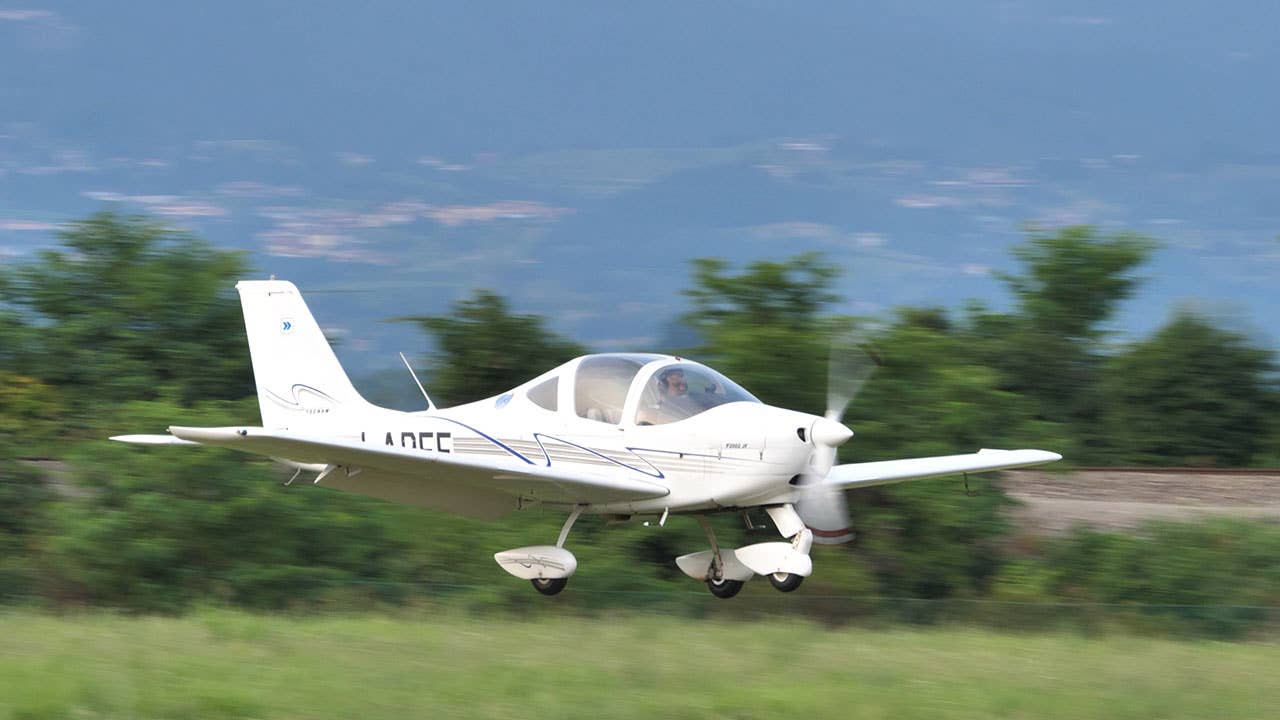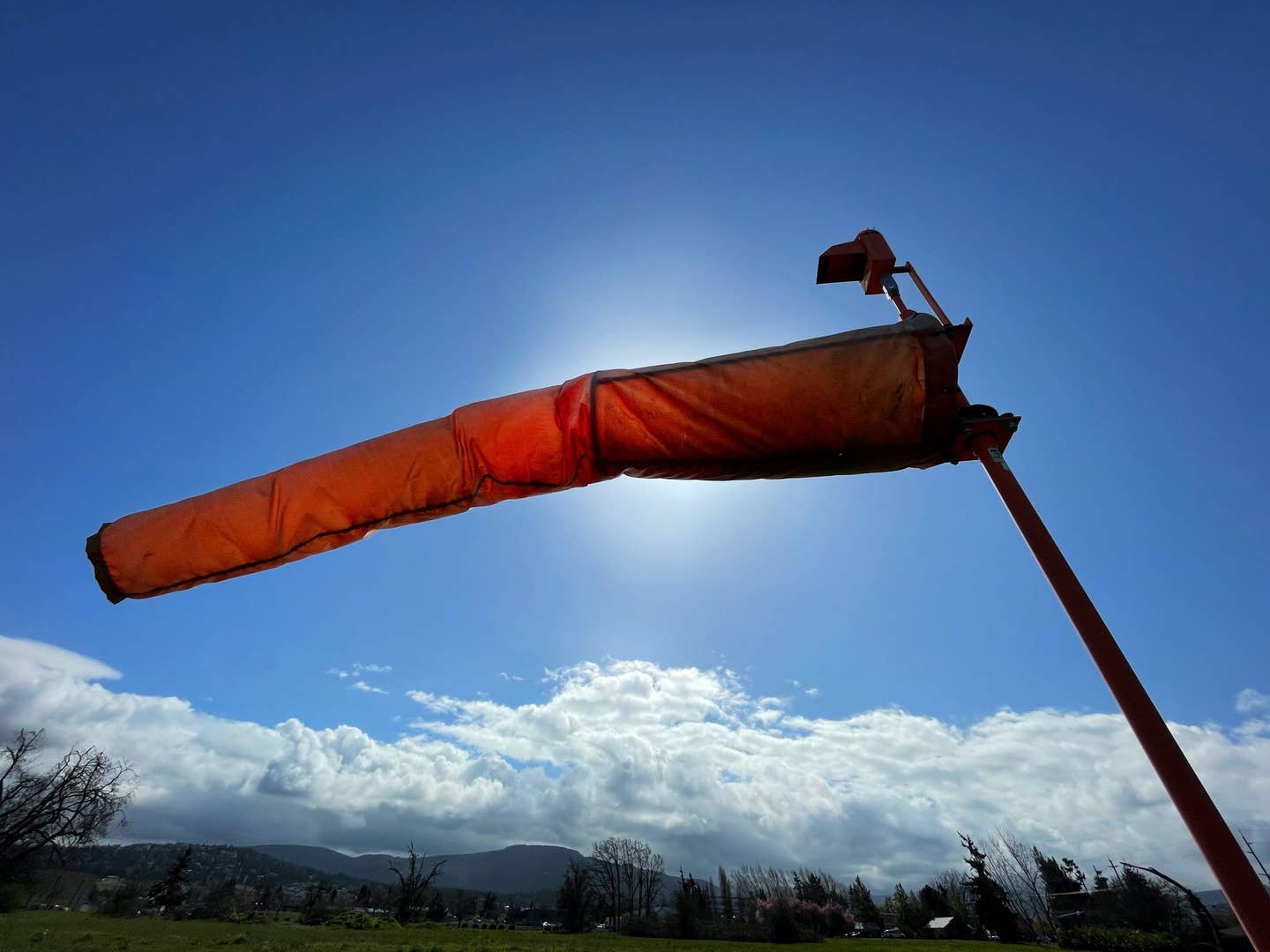Three Keys To A Successful Landing
You can learn to land like a pro if you pay attention to just a few critical things.

It seems like everyone has an opinion about what makes up a successful landing. Chuck Yeager may have said it best when he surmised, "If you can walk away from a landing, it's a good landing. If you use the airplane the next day, it's an outstanding landing." Specific landing techniques and procedures are as varied as the multitude of aircraft shapes and sizes and the talent and training of their pilots.
Thirty years ago, Air Force pilot trainees had to master landings in four unique aircraft within a two-year span. For flight screening, they flew the Air Force version of the Cessna 172, then on to the jet-powered T-37 Tweet, which thankfully landed like a 6,000-pound Cessna, and then they encountered the T-38 Talon, which landed more like the Space Shuttle but with power. Finally, they graduated to a supersonic fighter or apartment building-sized B-52 bomber or C-5 transport. So how did they succeed in making such a great journey with less than 200 hours in their logbooks?
The key to success was helping these young jet jockeys understand there are three parts to any successful landing. The first consists of the mechanics of the landing, made up of the repetitive procedures that get the airplane close to the runway in landing configuration. The second is the visuals. Specifically, where does the pilot look, what are they looking for, and when do they look where? Finally, there is the finesse, which consists of the pilot's feel for the airplane and ground effect as it transitions the last few feet to touchdown. So, let's look at the mechanics first.
The Mechanics
This discussion usually starts a spirited argument about whether landings are an art or a science. Are good landings the triumph of our golden gloves and awesome depth perception, or is there something more systematic at work?
Well, the designers of modern jet airliners have come down on the side of science. For the last 30 years, many of these marvelous pieces of aviation technology have been equipped with autoland systems. Autoland allows an aircraft on an ILS glidepath to land safely in zero-zero weather conditions while the pilots "monitor" the procedure. And since these systems, both mechanical and human, require monthly exercise, you may well have experienced an autoland as a passenger and not been the wiser. Note, the autopilot does not usually come to the door to say "buh-bye" as you leave the plane. And, of course, Garmin's Collier Trophy-winning Autoland system has recently brought this bit of science down to general aviation and in ways that far surpass autoland systems on commercial airliners.
What the scientists and engineers discovered is that landing, much like the rest of any flight, is an exercise in applied physics. Computers, including our human brain, benefit from a consistent set of mechanical inputs as we make our approach and landing. The key to consistent landings is the repetitive application of the proper configuration, power settings, trim setting, and aircraft positioning prior to the flare. This starts on downwind or the final approach and sets the stage for success. Each aircraft type will have a different process for configuration, speed control and trim setting prior to touchdown, but consistency wins the day.
Most light singles require progressive flap settings from downwind to final, a single power setting during the turns and descent, and an adjustment of the trim as the flaps and speed reduction take hold. The key is to anticipate rather than react. The goal is to get the airplane as close to the runway before the pilot must exercise the finesse and talent that results in one of Yeager's outstanding landings.
The Visual
Where the pilot is looking is just as critical as consistency in the approach. For years, we have been told to concentrate on our touchdown point and then look up toward the end of the runway as we begin the flare. Good advice. However, have you noticed that during some of your best landings, you were able to look around on final approach and see the aircraft waiting to take off, the cars on the nearby highway, and the kids at the airport fence? Keeping your head and eyes moving around while maintaining the desired aimpoint adds to the pilot's sense of height and location on final. Just as we do not just stare at the attitude indicator during the instrument crosscheck, an active visual scan will aid in a successful arrival.
Okay, so how about that transition to the flare? No matter what airplane you fly, it is critical that you keep the desired touchdown point motionless in the windscreen until transitioning to the flare.
Wait at least until the airplane gets closer to the runway, at which point it is time to look left and right to get a sense of your relative height. And then, as the flare begins, lift your eyes to the horizon, checking the position of the nose compared to the runway and taking an occasional glance out each side to see when you might actually land this thing. In fact, Charles Lindbergh flew the Spirit of St. Louis across the country, to Paris and around the U.S. for over a year without the benefit of a windshield. So looking out the side window is not only okay; it's been proven to work!
The key is to not stare at any one thing. Fighter pilots call this target fixation, and it has caused more than one jet jockey to fly into the target they were bombing or strafing. Keeping the visual part of your landing flexible will help you judge your height, feel out the wind direction and velocity, and be assured the aircraft is stabilized and ready to land.
The Finesse
Okay, we get all this science, but don't we human pilots have an edge on these darn computers? The answer is yes. While autoland systems produce safe touchdowns within aircraft structural limits, no one will mistake them for the highly desired grease job that elicits "oohs" and "ahhs" from our passengers. Finesse is what we use to reach down the last couple of feet and find the pavement. Talent, hand-eye coordination and motor memory each result from repetition, training and a little individual talent. The trick here is to plan the approach so that the requirement for pilot finesse is reduced to the minimum required. If we consistently arrive a foot or two above the runway, configured properly and on speed, our talent and finesse, whether in great or small supply, will be enough to make the ride down the last several inches to touchdown a success. We can't all be home run hitters, but we can earn a good batting average!
Putting it all together
So, what do professional baseball players and pilots have in common? Each of us gets into a hitting/landing slump from time to time. It's quite common for baseball players who are averaging better than a hit every three trips to the plate, which could get you to the Hall of Fame if you do it long enough, to find themselves in a slump, in a place where they can't find the ball in the strike zone to save their lives. When this happens, they go back to the fundamentals: the mechanics of their swing, where they are looking, and back to the batting cage for more practice.
When pilots get in a slump, a review of the fundamentals is equally in order. First, what is missing from the mechanics of the landing process? Second, where are we looking during the landing? Are we fixated on the runway, or do we have a broader crosscheck? And finally, do we need some practice to get back that golden touch?
As pilots, we can either log smooth "landings" or less-smooth "arrivals." When the arrivals begin to outnumber the landings, it may be time to review the fundamentals. And just like our pro baseball players have batting coaches, we have our local CFI. Getting a little coaching can mean the difference between one of Chuck Yeager's good or outstanding landings.

Subscribe to Our Newsletter
Get the latest Plane & Pilot Magazine stories delivered directly to your inbox






